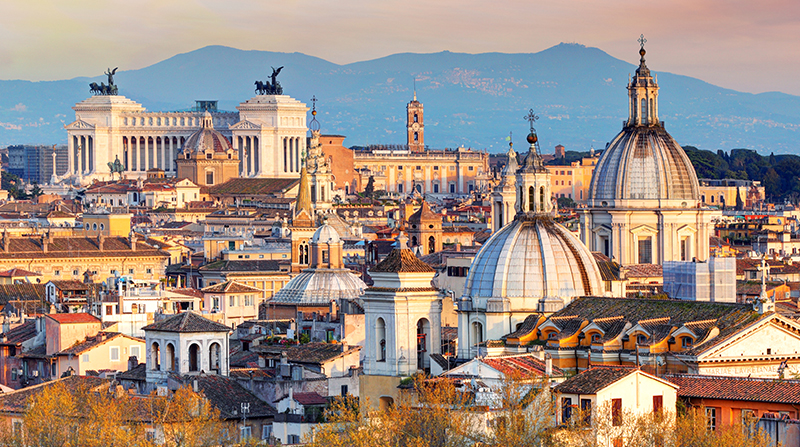

Views of Rome. Credit: iStock/Tomas Sereda
Figuring out the least-crowded time to visit Vatican City and locating the tastiest gelato shops are only parts of the puzzle to having a successful stay in Rome. Read on for a few tips that will go a long way to making your Eternal City vacation unforgettable.
The best time to visit Rome
Rome is beautiful any time of the year, whether early spring, late summer, fall or winter. January and February are cold, quiet and romantic.
The days leading up to Easter and following weeks tend to be more busy than usual with the celebration of the holiday — sometimes the tourist congestion can be a little overwhelming, especially those wanting to walk through the Vatican Museums.
July is when the mercury rises drastically, and with air conditioning not always providing a strong chill, this month can be infernal.
In August, many businesses close and several residents leave the city, offering an unusual calm.
The fall months are beautiful with life very active in the piazza, and dining outdoors is always an option.
The Christmas season is particularly lovely as the city is decorated in holiday finery, whether it’s window displays or charming church Nativity scenes.
What you should pack for a trip to Rome
If you’re heading to Rome and are wondering about which essentials to pack, the most important thing to remember to include in your luggage is a pair of sensible shoes. For fall, winter and spring travel, “sensible” means shoes that can endure many miles on cobblestoned streets and are water-resistant. For the summer months, this translates to sandals and/or lightweight sneakers.
As for clothing, Italians rely on the bella figura to dictate appropriate attire. In a nutshell, style and comfort should be double-billed when choosing clothing. Keep in mind that churches require covered shoulders and knees, so accessorize with an attractive scarf that can be both shoulder covering and a stylish addition for any season.
Trousers are ideal in the summertime for evenings out and a St. Peter’s Basilica visit. Fall, winter and early spring can be chilly, so bring warm sweaters, cardigans and even a waterproof overcoat.
During spring and summer, also pack a foldable hat, sunscreen and a great pair of sunglasses.
What is tipping etiquette like in Rome?
Tipping is a hot debate in Rome. Most Romans will tell you that there is absolutely no need to tip — waiters receive monthly salaries as opposed to minimum wage, and coperte (per person cover) are almost always itemized into the bill.
If there is a reason to tip — such as great service, the waiter is a friend, personal obligation, etc. — it is merely a token gesture of only a few coins. In fact, big tippers are rare and mostly hold foreign passports. However, a few years ago, Facebook founder Mark Zuckerberg inflamed the debate when he supposedly did not leave a tip at the Ghetto’s Nonna Betta restaurant. The speculation is that he was literally living by the “When in Rome… ” mantra.
The bottom line is that tipping in Rome is all about comfort zone. If you feel you should tip leave 10 percent, go right ahead.
Should you rent a car in Rome?
Visitors to Rome have no need to rent a car. The city is well connected by ATAC public transport, hired car/driver services and taxi. On top of that, most areas and sites are easy to reach by walking and/or bicycle.
For those insistent on driving around the city, it is important to know that travel within the center is reserved for ZTL (limited traffic zone) permit holders, available only to residents and businesses. Most rental car companies usually do not offer ZTL permits to its clients.
